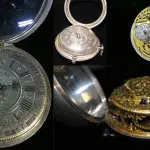
NASA Reveals Blueprint For Deflecting Killer Asteroids
Featured in Ripley's Believe It or Not!

Humanity has long been obsessed with its own demise. From Y2K to the end of the Mayan calendar, people have spent countless hours predicting cataclysmic futures. Thankfully, none of the fearmongering has manifested. But that hasn’t stopped Hollywood from fixating on horrific options for planet-wide destruction. Among the most famous tropes is a collision with a killer asteroid.


